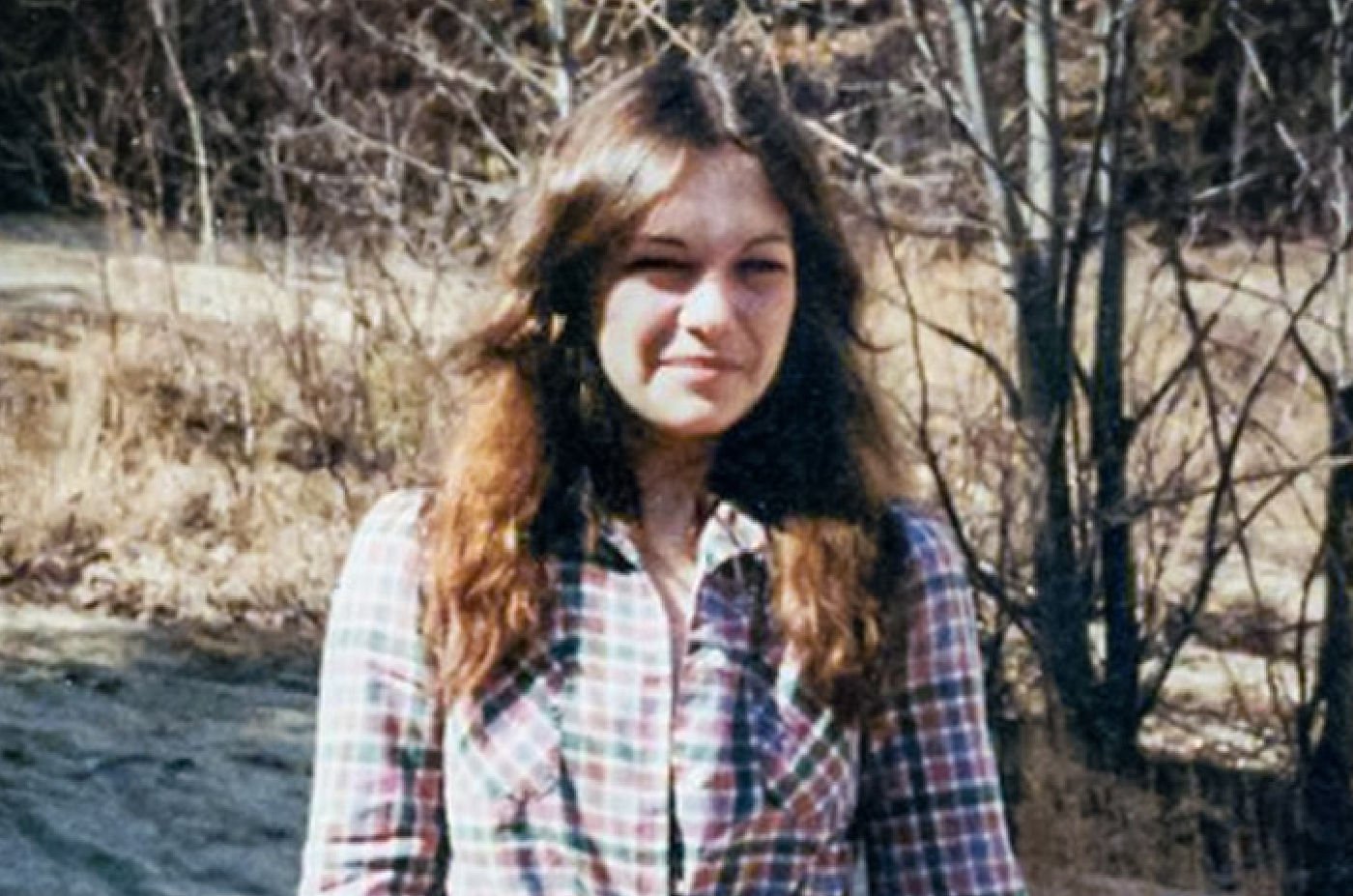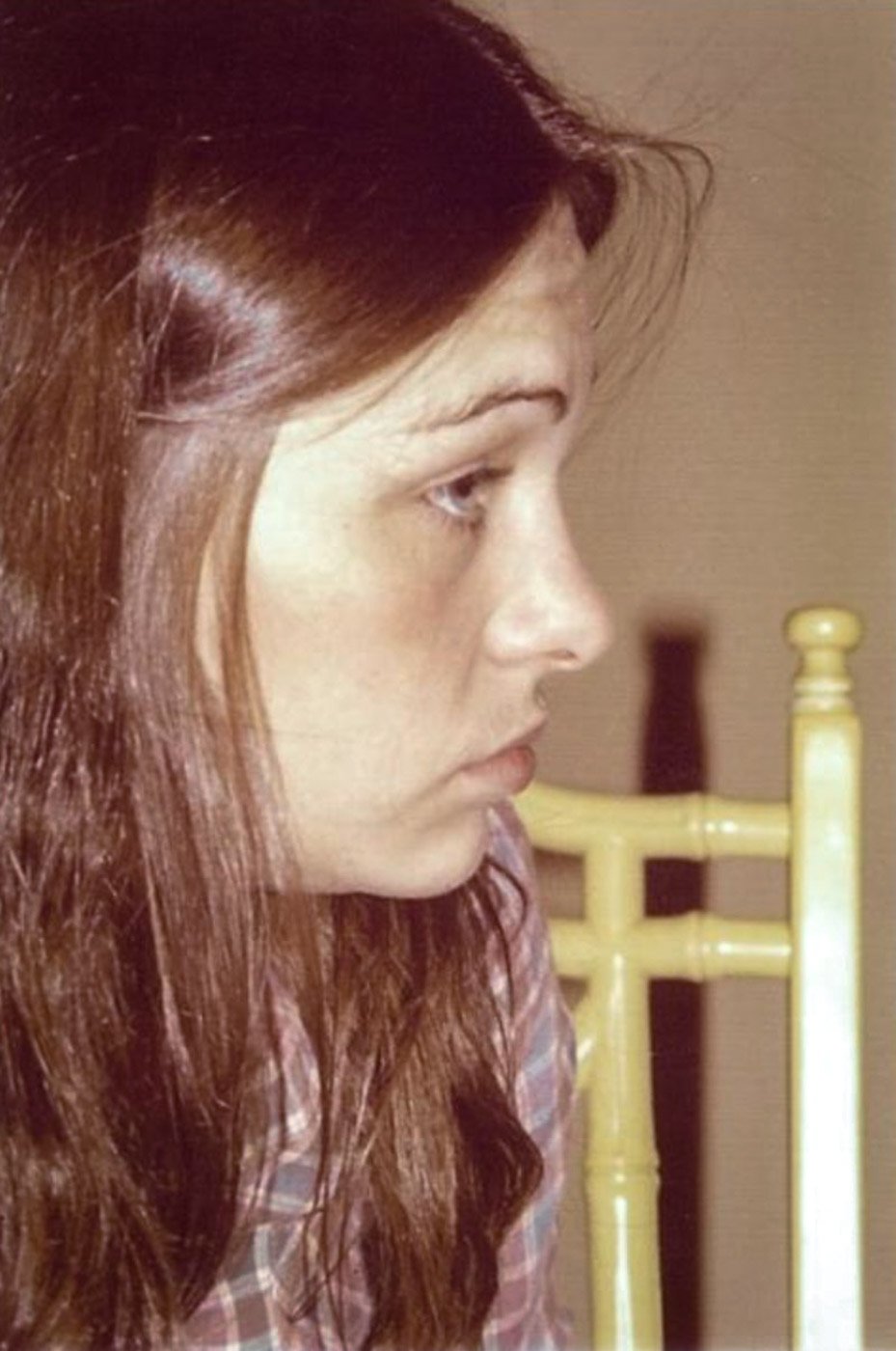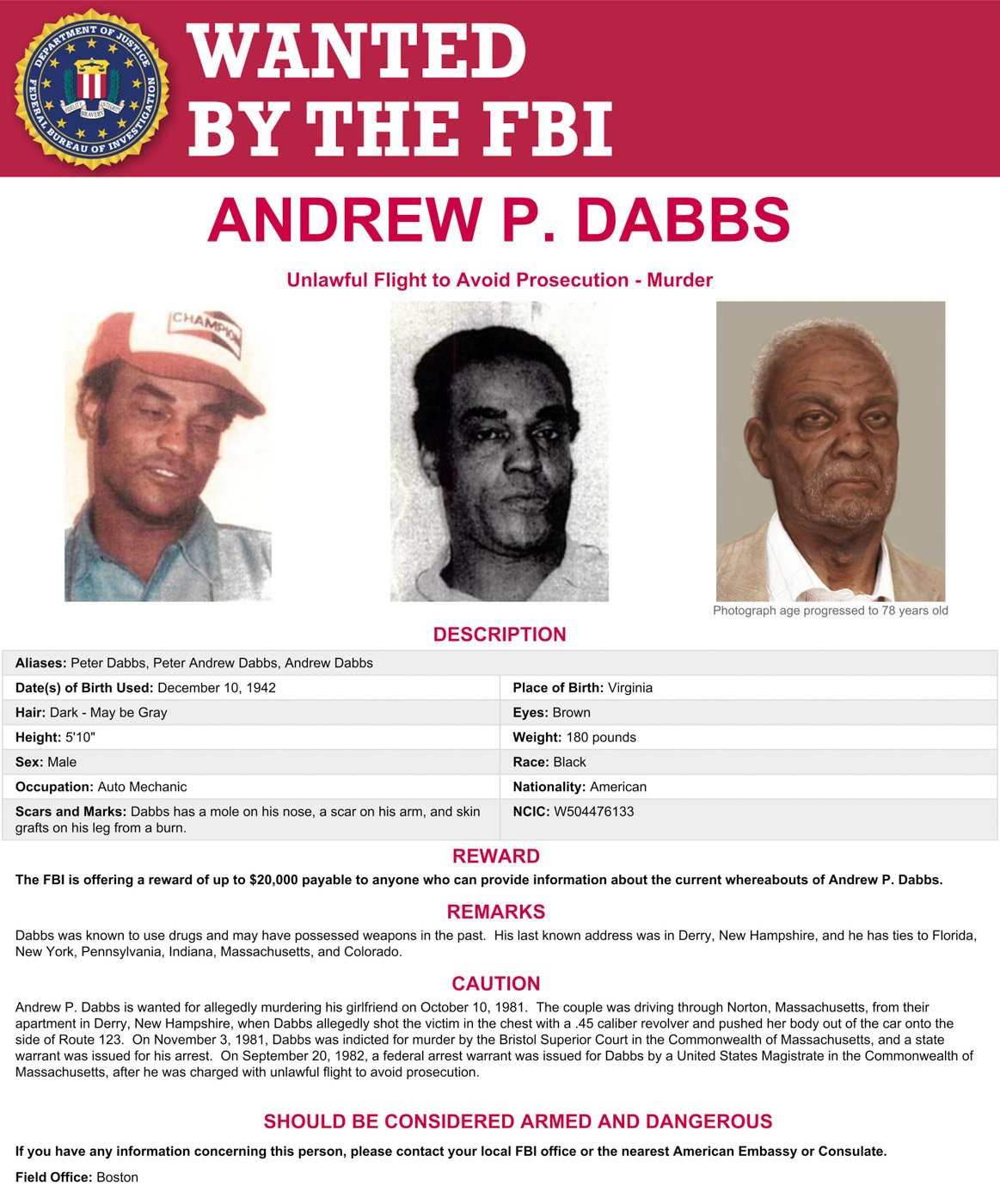Andrew Peter Dabbs: Justice for Robin Shea
Robin Shea: Left to die on the side of the road
After a stubbornly long summer, fall had finally come to Norton, MA in October 1981. Dead leaves stirred in the wake of the car’s tires as it swept down West Main Street. The dark stretch of two-lane highway grew gradually darker as it led out of town, the businesses becoming more sparse and the sidewalks giving way to gravel and scrub brush. It was not the type of road where one expected to see pedestrians so late at night. So, when the high beams illuminated the woman staggering at the side of the road, the driver must have done a double-take.
They pulled over down the road, found a phone, and called the police.
Fred Russell, a Norton firefighter, was not working that night but heard the call to police and responded anyway. He knew the town’s roads well and had no trouble locating the grassy patch of land just across from the Downtown Café.
Fred pulled his car up behind the ambulance and got out. He recognized them as his coworkers, Lawrence Lamey and Reese Rounds. The veteran firefighters were slightly older than Fred and, like him, also served as EMTs. He saw that his colleagues were already stabilizing their patient, a woman who was unresponsive. She was white, petite, and young—Fred would later learn that she was his exact age, just 21, but she looked even younger—perhaps in her late teens. In the light spilling from the open doors of the ambulance, he could see that she was in rough shape—blue denim jacket stained with blood and her skin marked with bruises.
Around 11:00PM, less than an hour since the motorist’s emergency call, the woman was rolled into an operating room, silent and unconscious. Under the bright surgical lights, the doctors noticed a chipped tooth and dark bruises, as well as some lighter ones, several days old. It wasn’t until they were removing her clothes that they discovered that she had been shot.
She never regained consciousness… never learned how hard the hospital staff worked to save her. They lost her just after midnight. She succumbed to her injuries.
A body with no name
As the surgical team fought to save her, less than four miles away police searched the tall grass at the side of West Main Street where she was found. They discovered a discarded .45 caliber revolver and a bloodied pillow not far from the edge of the road. They immediately suspected it was the one used in the shooting, but both items were bagged and sent to a lab in Boston for analysis.
Early in the morning of Sunday, October 11, Norton Police Detective Sgt. Louis Brugliera faced a problem—he had no idea who was lying in the morgue at Sturdy Hospital. She had no identification on her.
The victim was thin—barely five feet tall and less than 100 pounds. Her diminutive size led them to believe that she might be as young as 16. Her eyes were blue and her shoulder-length hair was brown.
An autopsy, conducted that same day—Sunday afternoon—confirmed that she had been shot twice and the bullets, surgically removed, appeared to be approximately .45 caliber in size—the same caliber as the recovered revolver. The gunshot to her torso had passed through her lung, heart, and pulmonary artery before lodging in her upper right arm. The second bullet had torn a devastating hole through her left arm. Corroborating the ER staff’s observations, the medical examiner also concluded that she had been beaten, and not just on the night she died… bruises and scrapes covered her stomach, knees, legs, fingers, and face. Her right eye was blackened and swollen.
A witness who had been in the downtown area of Norton told police that they had seen a dark Jeep on West Main Street between 10:00-11:00PM, around the time of the shooting. The vehicle had a canvas top and a distinctive, white-rimmed spare tire mounted on the rear. Sergeant Brugliera gave a press conference that afternoon where he provided a description of the Jeep and the Jane Doe to the public. He emphasized that his team only wanted to speak with the driver.
For two more days, the body of the gunshot victim lay unclaimed in the morgue. On the morning of Tuesday, October 13, Sergeant Brugliera held a second press conference. This time, he changed his approach and distributed a photograph of the young woman’s face, taken posthumously.
Finally, a tip arrived from southern New Hampshire. A man who worked at Grenier Industrial Park in Manchester had seen the photograph and thought that it resembled a female employee who had not turned up at work that week. He gave them a name, and that’s how, nearly five days after her death, Robin Shea was identified.
Robin Ann Shea
Robin was born in 1960 in Littleton, NH, to Robert and Joanne Shea, who went by Bob and Joan. She had two older siblings: a brother, Kevin, two years older, and a sister named Joyce who was four years her senior.
Before Robin started grade school, the family relocated to Hooksett, New Hampshire, a small town north of Manchester. Her father had found work as the principal of Fred C. Underhill Elementary School, where Robin later attended.
Bob wanted his children to be a model for the rest of the kids at school, but he fixated most of his attention on Robin, who seemed to struggle the most to meet his expectations. Perhaps it was growing up as the daughter of an authority figure that made Robin chafe so much against the rules.
We spoke with Robin’s sister, Joyce, to learn about her childhood.
She recalled a story from 4th grade—Robin wanted to wear makeup for her class picture. Her parents had a rule—no makeup no piercings until they were 16. Robin acquiesced, but when the yearbooks came out, everyone was surprised to discover that Robin had done her eyes with blue eyeshadow under the nose of her father. Her disobedience was forever memorialized in the annals of yearbook, and her father was furious.
Looking back on it from the vantage of decades passing, it seemed trivial, but at the time, it was a focal point of the budding conflict.
There were many rules in the Shea home, and Robin found herself chastised regularly for breaking them. She was the problem child.
But by the time that Robin was in junior high, the conflicts were growing in severity. Joyce recalled that Robin was unresponsive to consequences. When punishments were threatened, she would escalate things, saying, “go ahead and spank me.” After a particularly bad one between Robin and Joyce, her father decided to get the juvenile justice system involved. Robin ended up being committed to a reform school for about a year—a residential program where she was separated from the rest of her family.
When Joyce left for college, things began to take a turn in their relationship. Childhood grudges were left in the past. Robin visited Joyce in Dover, New Hampshire. They were cutting up and giggling in their kitchen about washing her toaster—some much-needed light-hearted fun.
In her early high school years Robin began dating a much older guy named Dan—he was 8 years Robin’s senior. Despite the age difference, her family supported the relationship. He seemed to have a stabilizing influence on Robin. And Joyce remembered that he was head over heels in love with her.
Robin didn’t like school, and as soon as she could, she left—probably around her sophomore high school year. It was not uncommon for teenagers to leave school in the 1970s and 80s. So, she got a job and contributed financially to the household.
In 1977, at the age of 17, Robin began working for Armtec Industries, an electronics manufacturer located in Manchester’s Grenier Industrial Park. A personnel manager at her job described Robin as a good worker who was very popular with her fellow employees. In her three years at Armtec, she was promoted twice, and her last title was senior assembly operator. Despite a rocky start, Robin’s life seemed to be on an upward trajectory, one with job security and a healthy social life.
But in the spring of 1980, things were about to change. She had ended things with her long-time boyfriend, Dan, and had met a new man—a violent man, 17 years her senior.
Andrew P. Dabbs: Everyone knew him
Peter Dabbs is something of an enigma. We know so little about his early life. Mostly he’s a collection of facts scattered across a handful of newspaper articles... a blurry picture in a police file.
Though his legal name was Andrew Dabbs, he most often went by his middle name, Peter. He was born in Virginia on December 10, 1942, but we found little information about how he came to live in New Hampshire in the 1970s. At the time, the state’s population was 99% white. As FBI Agent Sarah De Lair would later note, “He literally was the only Black man in town. Everyone knew him, and he was very charismatic as well.”
By the spring of 1980, Peter was married and had two children: a four-year-old and an infant. The family lived at 284 Central Street, a large multifamily home in the heart of the city. Domestic life did not prevent him from finding trouble: newspaper notices listed arrests for assault and the theft of a bicycle during this time in Manchester. He was also rumored to be dealing drugs in the area.
September of 1980 was a bad month for Peter. On Wednesday, September 3, he was arrested in Milford, NH, for possession of cocaine, carrying a revolver without a license, and the reckless operation of a motor vehicle. For the cocaine charge, Peter entered no plea, and for the other charges, he pled not guilty. The following Wednesday, he was arrested for driving under the influence in Goffstown, NH, where he was living at the time.
Peter and Robin moved in together in October of 1980, after six months of dating, much to her mother’s chagrin. We don’t know if Peter was estranged from his wife before or after he began seeing Robin. In December, after Peter had failed to appear in court for his September charges, a judge issued a bench warrant for him. Simultaneously, a second bench warrant was also issued for his failure to answer complaints from police in Amherst, NH, for failing to stop for an emergency vehicle.
In early October, she and Peter moved into an apartment on Hampstead Road in Derry, NH, just across from the East Derry Fire Station. Though they had been living together for a year, they had only just moved into their new apartment when, on the afternoon of October 10, they departed for a road trip to Massachusetts.
Neighbors saw them getting into their landlord’s vehicle, a dark blue Jeep with a canvas top. This was the same car that would be spotted later that night on West Main Street in Norton—the night of Robin’s death.
A wanted man
By the time that Robin’s parents stood in Boston’s Southern Mortuary looking over their daughter’s remains, Peter was a wanted man. The Norton investigators were working with the state police and had obtained warrants for his arrest. A spokesperson for the Bristol County District Attorney’s Office offered the media a detailed description of Peter and the Jeep.
Police finally caught a break on Saturday, October 24, two weeks after the shooting. The dark blue Jeep that Peter was last seen driving was spotted at a shopping mall in Pelham Manor, New York, a suburb north of NYC. It had apparently been abandoned.
The next morning at 6:00AM, police raided a home in nearby Mount Vernon, NY, where they suspected he might be. The shocked occupants admitted that Peter had stayed with them for a few days but had left five days prior. They claimed not to have known that he was wanted in a murder investigation but did admit he had been “acting strange.”
Just two hours later and less than seven miles away, Peter sat in a friend’s apartment in the Bronx, New York. When he heard the knock on the door, Peter was ready. By the time the officers stepped across the threshold, he had run out the back of the building and disappeared into the early morning bedlam of the city.
By December, Peter was placed on the FBI’s Most Wanted List, meaning that his photo, arrest record, and fingerprints were sent to every law enforcement agency in the country. A poster with his information was also distributed to post offices across the U.S. Anyone waiting in line to send their Christmas packages would have seen Peter’s face, smiling faintly under his baseball cap, with the Goffstown jail placard hanging from his neck.
In September of 1982, a federal arrest warrant was issued in relation to his unlawful flight to avoid prosecution. In essence, the charge not only added to those already levied against Peter but also expanded the investigation to federal law agencies like the FBI and the US Marshals.
FBI’s 10 Most Wanted: 40 years of searching
Sunday, October 10, 2021, brought about the 40th anniversary of Robin’s killing and Peter’s flight. Robin, had she lived, would have been 61 years old, and Peter, 78. To mark the occasion and renew efforts to locate Peter, if he were still alive, the FBI offered a $20,000 reward in exchange for information on his whereabouts. The agency also released a colorized and remarkably realistic age-progressed photo of what Peter might look like at 78.
Joseph Bonavolonta, a special agent with the FBI’s Boston division, implored the public to stay alert for someone matching Peter’s description. “Someone out there knows where Peter Dabbs is, and we're asking you to contact us. We're doing everything we can to bring him to justice and provide some much-needed closure to Robin's family, who has already endured enough heartache.”
FBI Agent Sarah De Lair was unconvinced that Peter was still alive, given his habitual drug use, but still wanted to know where his flight from justice took him. "We're trying to get a timeline—what he has been doing… who has had contact with him… who has seen him… we're trying to put the pieces together."
Today, Peter would be 81 years old. The threads that bound him to his former life seem to have been severed completely—his ex-wife has cooperated with investigators and his two children, now in their forties, were never suspected of harboring their father or even being in contact with him. The vacuum left by Robin’s death, however, is one filled with grief. In an interview that Joyce had with the FBI in 2021, she said,
"She died when she was 21 and I was 25. Her life was cut short. That was a really tough thing for me, personally, but it was really devastating for my family. My family pretty much fell apart after that.”
We may never know if Peter felt any remorse for what he did, if he ever thinks about Robin or the families that they both left behind.
The truth is that there are two Peters now. One is dead—perhaps by his own hand, or through violence, disease, or habitual drug use. The other Peter is still out in the world, living out the twilight years that Robin was denied. Maybe he built a new life, brick by brick, starting with a fresh name. Or maybe he has been on the move, constantly one step ahead of his own shadow.
This Peter is an old man now. His back is stooped, and his eyes are not as sharp as they once were. His hearing is failing him, but he still tilts his head, just slightly, listening for sirens.
If you have any information on Andrew Peter Dabbs, please contact the Boston Field Office of the FBI at (857) 386-2000 or leave a tip at fbi.gov.
This text has been adapted from the Murder, She Told podcast episode, Andrew Peter Dabbs: Justice for Robin Shea. To hear Robin and Peter’s full story, find Murder, She Told on your favorite podcast platform.
Click here to support Murder, She Told.
Connect with Murder, She Told on:
Instagram: @murdershetoldpodcast
Facebook: /mstpodcast
TikTok: @murdershetold
Robin Shea, ~5 years old (PC: Joyce)
Robin Shea, ~8 years old (PC: Joyce)
Robin Shea (PC: FBI)
Robin Shea, 6 years old (left) and older sister, Joyce, ~10 years old (right) (PC: Joyce)
Robin Shea, ~9 years old (PC: Joyce)
Robin Shea (PC: FBI)
Robin Shea, ~17 years old, older brother Kevin, ~19 years old, older sister, Joyce, ~21 years old (PC: Joyce)
Andrew “Peter” Dabbs (Goffstown PD)
Andrew “Peter” Dabbs (Goffstown PD)
Similar vehicle that Robin Shea was shot in and pushed out of, a 1977 Jeep CJ-5 (sjclassics.com)
Gravestone of Robin Shea (PC: Joyce)
Robin Shea’s older sister, Joyce (FBI)
Andrew “Peter” Dabbs, age progression to approximately 78 years old (FBI)
FBI flyer, in search of fugitive Andrew “Peter” Dabbs
Sources For This Episode
Newspaper articles
Various articles from Athol Daily News, Boston Globe, Boston Herald, Concord Monitor, Derry News, Lewiston Daily Sun, Nashua Telegraph, New Hampshire Union Leader, Portland Press Herald, Providence Journal, Taunton Daily Gazette, and the Sun Chronicle, here.
Written by various authors including Breanna Edelstein, Candy Frank, Dave Linton, Emily Sweeney, Henry Reiley, Mike Kirby, Hila Parsons, Jim Devine, Marie Szaniszlo, Mark Hayward, Melanie Bracci, Mike Kirby, Peter Spink, Rose Ford, Steve Sakson, and W. Zachary Malinowski.
Photos
Joyce and the Shea family, the FBI, Goffstown PD
Interviews
Special thanks to Robin’s sister, Joyce, for speaking with us, and to Robin’s uncle, Michael.
Online written sources
'FBI Announces $20,000 Reward for Information Leading to the Arrest of Fugitive Andrew P. Dabbs' (FBI), 10/21/2021, by Kristen Setera
'Sister Seeks Answers in Robin Shea's Murder 40 Years Ago' (FBI), 10/21/2021
'Photo of Murder Victim Robin Shea' (FBI), 10/21/2021
'Robert John Shea' (FindaGrave), 12/10/2015, by u/Shan Clark
'Robin Ann Shea' (FindaGrave), 4/29/2024, by u/Byron Willis
Credits
Research, vocal performance, and audio editing by Kristen Seavey
Research, photo editing, and writing support by Byron Willis
Writing by Morgan Hamilton
Additional research by Ericka Pierce, Brittany Healey, and Martha Bouton
Murder, She Told is created by Kristen Seavey.























